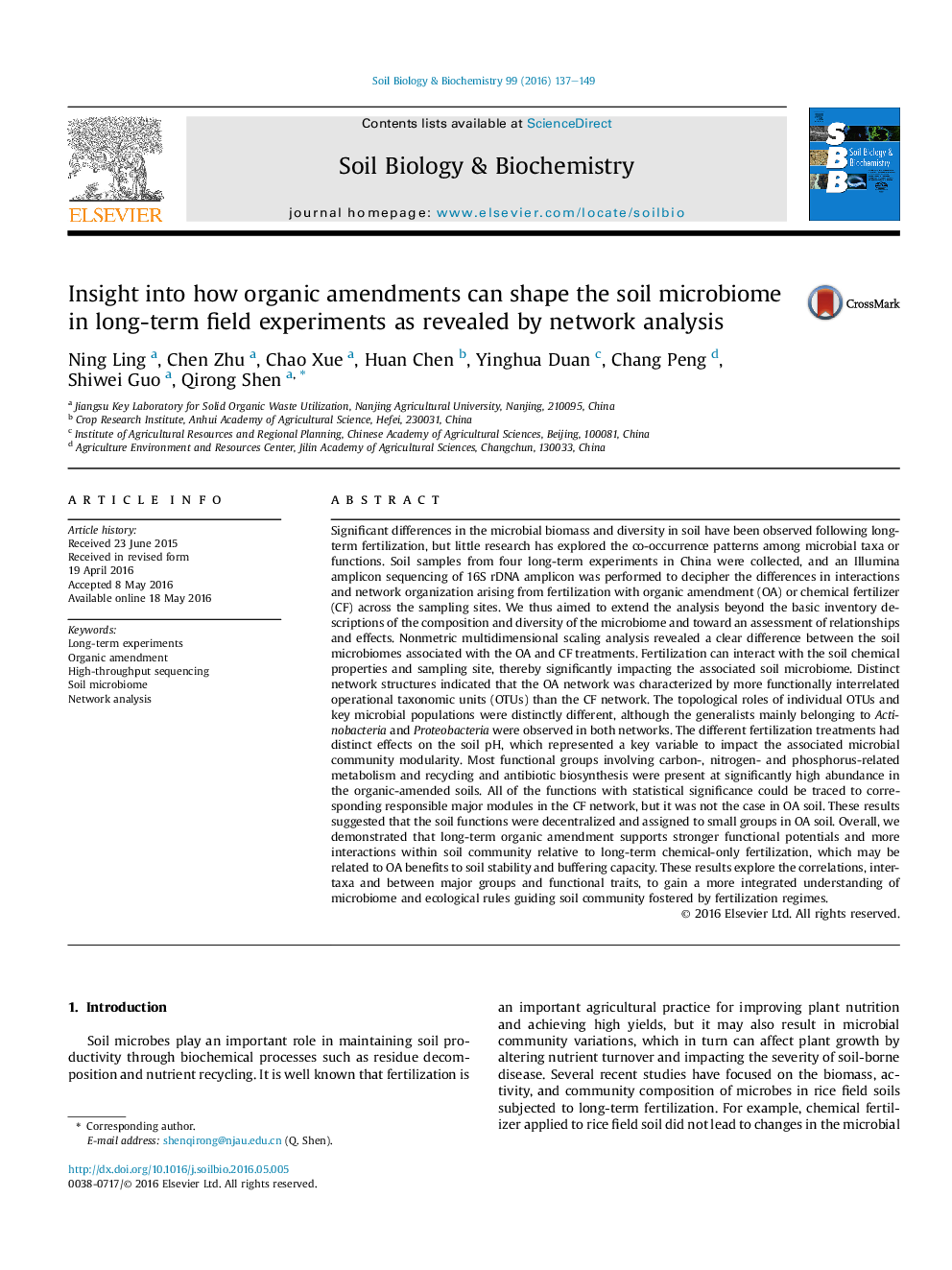| کد مقاله | کد نشریه | سال انتشار | مقاله انگلیسی | نسخه تمام متن |
|---|---|---|---|---|
| 2024306 | 1542585 | 2016 | 13 صفحه PDF | دانلود رایگان |
• Soils fertilized with and without manure were sampled from 4 long-term experiments.
• Networks in microbiome were analyzed and microbial functions were predicted.
• Organic amendment supports stronger functional potentials and more interactions within soil community.
• Microbial functions were decentralized and assigned to small groups by organic amendment.
• pH represents a key variable to impact the microbial community modularity.
Significant differences in the microbial biomass and diversity in soil have been observed following long-term fertilization, but little research has explored the co-occurrence patterns among microbial taxa or functions. Soil samples from four long-term experiments in China were collected, and an Illumina amplicon sequencing of 16S rDNA amplicon was performed to decipher the differences in interactions and network organization arising from fertilization with organic amendment (OA) or chemical fertilizer (CF) across the sampling sites. We thus aimed to extend the analysis beyond the basic inventory descriptions of the composition and diversity of the microbiome and toward an assessment of relationships and effects. Nonmetric multidimensional scaling analysis revealed a clear difference between the soil microbiomes associated with the OA and CF treatments. Fertilization can interact with the soil chemical properties and sampling site, thereby significantly impacting the associated soil microbiome. Distinct network structures indicated that the OA network was characterized by more functionally interrelated operational taxonomic units (OTUs) than the CF network. The topological roles of individual OTUs and key microbial populations were distinctly different, although the generalists mainly belonging to Actinobacteria and Proteobacteria were observed in both networks. The different fertilization treatments had distinct effects on the soil pH, which represented a key variable to impact the associated microbial community modularity. Most functional groups involving carbon-, nitrogen- and phosphorus-related metabolism and recycling and antibiotic biosynthesis were present at significantly high abundance in the organic-amended soils. All of the functions with statistical significance could be traced to corresponding responsible major modules in the CF network, but it was not the case in OA soil. These results suggested that the soil functions were decentralized and assigned to small groups in OA soil. Overall, we demonstrated that long-term organic amendment supports stronger functional potentials and more interactions within soil community relative to long-term chemical-only fertilization, which may be related to OA benefits to soil stability and buffering capacity. These results explore the correlations, inter-taxa and between major groups and functional traits, to gain a more integrated understanding of microbiome and ecological rules guiding soil community fostered by fertilization regimes.
Journal: Soil Biology and Biochemistry - Volume 99, August 2016, Pages 137–149
